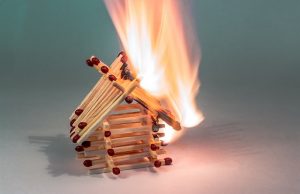 With summertime just days away, the Center for Construction Research and Training – also called CPWR – has issued a hazard alert about heating dangers and precautions employees can take to prevent heat-related illnesses on a slab crane. Data from CPWR reveals that 17 construction workers died in 2015 as a result of heat-related conditions.
With summertime just days away, the Center for Construction Research and Training – also called CPWR – has issued a hazard alert about heating dangers and precautions employees can take to prevent heat-related illnesses on a slab crane. Data from CPWR reveals that 17 construction workers died in 2015 as a result of heat-related conditions.
Recognizing the symptoms of heat exhaustion (weakness and moist skin; aggravation, dizziness and fainting; nausea or vomiting) and heat stroke (confusion or tingling; dry, hot skin and perspiration stops; and convulsions or seizures) one of co-workers is vital, the alert conditions.
CPWR offers these tips for working in hot weather:
- Dress for hot conditions. Wear clothing that are light, loose-fitting and lightweight.
- Drink water about every 15 minutes. Do not wait until you’re thirsty to drink.
- Don’t consume alcohol and avoid caffeine.
- Take regular breaks. Find shaded, cooled or air-conditioned places.
The danger for heat-related illnesses is growing for employees unaccustomed to higher temperatures working with the largest cranes or drake low loaders, people working in hot and humid weather, and people who perform heavy physical labour, based on CPWR.
The hazard alert also has tips for companies, including having a crisis plan and providing training on heat-related ailments.
What is a heat-related illness?
During a heat wave, it is important to understand and be able to recognize the symptoms and signs of a heat-related illness. There are various sorts of heat-related ailments, ranging from the ones that cause temporary discomfort to the generally deadly disease called heat stroke. In most heat-related illnesses, the symptoms arise when a man is subjected to extreme temperatures.
What are the symptoms and indications of heat-related illness?
The following checklist can help you recognize the signs of heat-related disorders:
Heat Rash: Heat rash is a skin irritation caused by excessive perspiration during warm, humid weather. It can happen at any age but is most common in young children. Heat rash looks like a red cluster of pimples or little blisters.
Heat cramps: someone that has been exercising or engaging in different kinds of strenuous activity from the warmth may develop painful muscle spasms from the arms, legs, or stomach known as heat cramps. The body temperature is usually normal, and the skin will feel cool and moist, but sweaty.
Heat syncope: Someone who experiences heat syncope (fainting) will have the sudden onset of dizziness or fainting after exposure to elevated temperatures, especially after exercising or working from a blueprint of second storey extension designs and ideas in the heat. Like heat cramps, the skin is pale and sweaty but stays cool. The heartbeat may be diminished, and the heart rate is usually rapid. Body temperature is normal.
Heat exhaustion: Heat exhaustion is a warning that the body is getting too hot. Those most prone to heat fatigue include older people, individuals with high blood pressure, and people working or exercising in a hot environment. Someone with heat exhaustion may be thirsty, giddy, weak, uncoordinated, nauseous, and perspiration profusely. Just like heat syncope and heat cramps, the body temperature is usually normal in heat exhaustion. The heart rate (pulse rate) is elevated or normal. The skin is generally chilly and clammy.
Heat stroke: Heating stroke is a serious, life-threatening illness that occurs when the body loses its ability to control its temperature. Victims of heat stroke almost always perish, so immediate medical care is essential when problems first start. In warmth stroke, someone develops a fever that quickly increases to dangerous levels within minutes. A person with heat stroke usually has a body temperature above 104 F (40 C), but the temperature may rise even higher for those outside for prolonged periods like home extension builders. Other symptoms and signs of heat stroke may include confusion, bizarre behavior, strong rapid pulse, feeling bloated, combativeness, dry flushed skin, staggering, and absence of perspiration. Delirium or coma may also result from heat stroke.
Seek emergency medical attention and always contact a GP or doctor if the symptoms of those conditions are severe or worsen with time, even if heat cramps, heat exhaustion and heat syncope may all be present in moderate degrees.